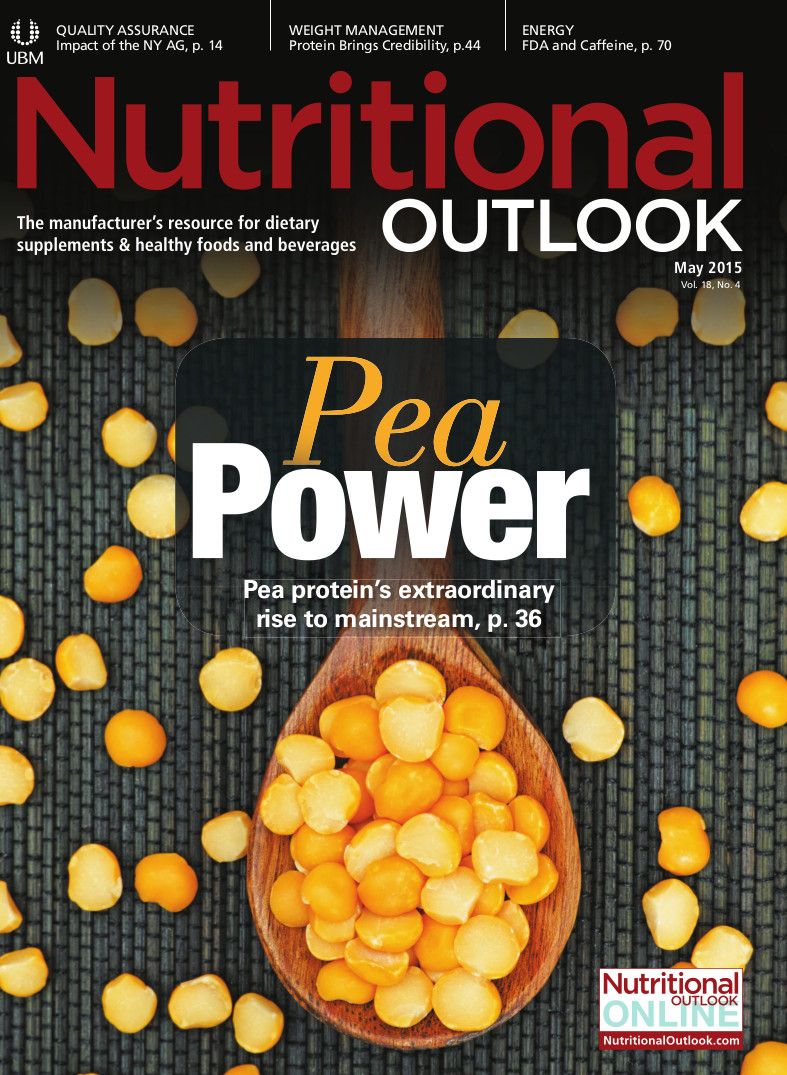How Big a Threat Is Plant Protein to Dairy Protein?
Plant-protein hype aside, don’t forget that animal proteins, especially dairy, still dominate.

Despite all of the hype around plant proteins these days, don’t forget that animal proteins, especially dairy, still dominate the health and wellness sphere.
At last week’s Ingredient Marketplace trade show in Orlando, Frost & Sullivan's Christopher Shanahan, global program manager, food and agriculture, gave a significant overview of today’s burgeoning protein market, including how the growing plant-protein market is facing off against animal sources.
This is the conclusion of our two-part protein interview with Shanahan. Click here if you missed our first story, “Plant Protein: Searching for the Next Soy."
Animal Protein Dominates
What continues to drive the animal-protein space? One category: infant formula. With demand for infant formula growing in developing economies like China, India, Southeast Asia-even Sub-Saharan Africa in the next 10 years-infant formula will continue to be a safety zone for animal protein. Add to that consistent demand for medical nutrition, milk-based nutritional drinks, and sports nutrition and weight-management goods, and one thing is clear: “Animal proteins still dominate. Dairy still runs this market,” Shanahan says.
Animal sources provide some key advantages, including convenience, ease of formulation, consistent performance, better product stability and functionality, and a complete amino acid profile, he says.
As a result, plant protein, especially soy, does threaten some of dairy’s market share, especially in markets like sports nutrition-but not as much as you’d think, he says. If anything, it’s more accurate to say that plant protein is growing at a faster pace, but still from a much smaller base.
Here’s how Frost & Sullivan sees the protein-market pie. Globally in 2015, animal-protein ingredient sales are projected to be 61.2%, compared to plant protein (13.8%) and amino acids (25%). (Analysis of the protein product market in 2014, however, has soy leading at 38%, followed by dairy (35%); non-soy plant protein (26%) such as grains, legumes, nuts, and seeds; and algae (1%).)
And for all the trendiness of plant proteins, Shanahan says that dairy-protein producers are themselves also thinking forward. “Even within the dairy space, we’re seeing a lot of dairy companies looking at their core ingredients and trying to make it a little different, using different feed stocks,” he says. “You’re getting a lot of new entrants into the marketplace with new products, new innovations, and new launches.”
Plant Proteins: The Way In
But that doesn’t mean dairy should rest easy. For while dairy will still dominate sports nutrition through 2020, for instance, “plant-based and algae proteins will cut into this lead,” Shanahan predicts.
A lot of plant protein’s current appeal stems from what Shanahan calls key mega-trends driving global protein demand. One is emerging markets. As economies develop, rising income correlates with a higher demand for meat. “Unfortunately, there’s only so much meat to go around, and many potential users in the future may have trouble paying for, buying, or finding certain proteins-which is making plant-based proteins a much more attractive option especially in emerging markets,” he says. “With China, India, Sub-Saharan Africa going into the emerging middle economy space demanding more protein ingredients and more packaged foods, there will be a significant strain on the ability of animal-based proteins. Which is why plant-based proteins are expected in the very long run-10-plus years-to be a very important nutritional part of the diets in these emerging markets.” In fact, some consumers may skip right past the seafood and meat and go straight to plant proteins as their protein of choice, he adds.
Plant proteins also benefit from their “ethical and green” story (sustainability, certainly), as well as natural, organic, non-GMO, and other rising claims.
One way in which plant proteins are finding a way in is through products that combine protein sources, including dairy/plant combos. Even though most protein products globally (76%) still feature just one protein source (usually dairy or soy), 23% of products do include two protein sources and 1% include three sources. Reasons for combining sources include maximizing a product’s digestibility profile (plant proteins are slower-digestion), tastiness (e.g., maintaining a plant-protein product’s palatability by adding other protein types), or simply being able to promote a multi-protein source as delivering multiple attributes.
In sports nutrition, plant protein is a stronger contender. In 2013 within the sports nutrition ingredients category, dairy protein still commanded the lead (59.3%), followed by plant protein (22%) and other sports-nutrition ingredients (creatine at 8.2%, amino acids at 5.7%). But, says Shanahan, as the proclivity to combine protein sources grows, “we expect that pie to be much different next year and the year after, as well.”
Everyone Wins
Animal proteins should keep plant proteins in their periphery, but the main takeaway from the protein sector is that there are huge opportunities and demand for almost everyone. In the nutrition space, “protein is the big gorilla in the room,” Shanahan says. Among the global health ingredients market in 2015, protein is the leader at 44%, compared to vitamins and minerals (28%), amino acids (15%), other health ingredients (8%), and nutritional lipids (5%).
“What’s key here is that this is a very dynamic space-a lot of ingredient categories compared to the vitamins and minerals or even the omega-3 space that have a smaller number of industry participants and a relatively small number of feedstocks,” he says. Conversely, with protein, “the entire world is a feedstock, from plants and animals to algae and insects, and the various types of products make this a very dynamic and highly competitive market.”
With so much competition, it’s critical that manufacturers quickly identify and address opportunities and threats, he advises. New product applications, he says, will drive growth beyond the consistent mainstays like infant formula and sports nutrition. Luckily, it’s a market that is highly innovative, with Frost & Sullivan tracking more than 2500 new product launches with protein ingredients last year (not counting Asia-Pacific). “There’s a lot of new product innovation around ingredient innovation throughout the entire value chain, which again really substantiates how dynamic this market is,” he says.
For a market that shipped nearly $35 million worth of protein ingredients to end-users last year, and with a 5.8% CAGR expected overall through 2017, the answer is clear: With protein, you can’t lose.
Also read:
Plant Protein versus Dairy Protein for Muscle Building
Plant Protein: 2015 Ingredients to Watch for Food, Beverage, Supplements
Correction 4/23/15
* A previous version of this article erroneously stated: Here’s how Frost & Sullivan sees the protein-market pie. Globally in 2015, animal-protein ingredient sales are projected to be 61.2%, compared to plant protein (13.8%) and amino acids (25%). Echoing this, if we’re looking at the protein product market in 2014, dairy led at 35%, followed by soy (38%); non-soy plant protein (26%) such as grains, legumes, nuts, and seeds; and algae (1%).
It was corrected to read: Analysis of the protein product market in 2014, however, has soy leading at 38%, followed by dairy (35%); non-soy plant protein (26%) such as grains, legumes, nuts, and seeds; and algae (1%).
Jennifer Grebow
Editor-in-Chief
Nutritional Outlook magazine
jennifer.grebow@ubm.com
Photo © iStockphoto.com/GoodOlga. Edited by Quinn Williams




















